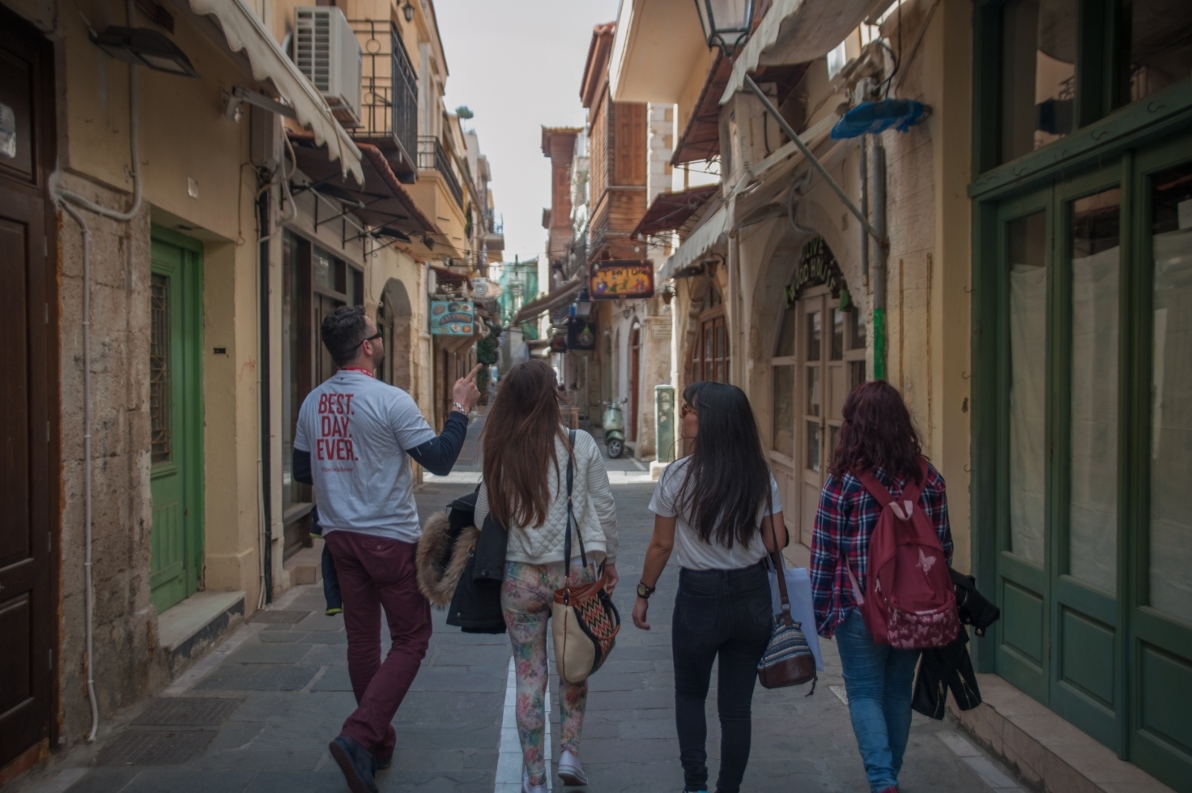
Beautiful beaches, mountain villages, cosy tavernas serving delicious local food and wine, and a rich history just waiting to be discovered are just a few of the reasons to plan a trip to Crete. To make the most of your visit while also minimsing your impact, keep the following tips in mind. The locals will appreciate your efforts, and you’ll get a far better experience of the city and local life while you’re there.
From 2pm to 5pm, Greeks take a break in their day, when they’ll eat and then take a nap. Please do not disturb anyone during this time, and note that noisy activities during siesta are frowned upon.
Always have cash on you since most of Crete’s tavernas, taxis and shops don’t accept credit cards.
Before you grab your camera, remember that in churches you should avoid photographing the main altar, monks or nuns, which is considered taboo. Always ask if photos are allowed if you don’t see any signs indicating that it’s okay to do so. In places where photos are allowed, remember not to use the flash since it can be damaging to the artifacts or ruins. Taking photos of military facilities is strictly forbidden.
Don’t hold your hand up to people or make the okay sign with your thumb and forefinger when in Crete, which are seen as rude gestures in Greece.
When visiting religious places, avoid wearing anything too revealing or something that shows a lot of skin. In addition, have your shoulders and legs covered, and take your hat off.
We recommend visiting Crete between March and mid-June or mid-September to November to avoid crowds. Winter is also nice, but you won’t be able to enjoy the sea and the sun as much.
If you want to spend some time on the beach minus the crowds, go before 12pm, with 10am being the best time. Another idea is to avoid the busier beaches, which are mostly located on the north side of the island. We recommend the south and west coast for quieter beaches. And if you want to enjoy Crete without going to the beach, drive inland and enjoy blending in with the locals. Crete has many mountainous, picturesque villages which host local festivals almost every season of the year.

Trade disposable for reusable coffee cups | Photo by Crete Urban Adventures
Plastic water bottles are one of the biggest causes of waste during the summer months when visitors tend to buy them and then dump them after drinking the water. If you find it hard to carry a water container or buy a glass bottle, keep in mind that tap water is safe to drink almost all over Crete so we recommend re-using any bottles you buy. The same advice goes for coffee cups. Nowadays, most coffee shops sell reusable cups, and you even get a discount upon ordering your coffee if you hand your cup instead of using the plastic ones. In addition, most areas have recycling bins, so please use them.
Even though Crete is the biggest Greek island, you can still get around easily on foot and you’ll see a lot more than if you were travelling by car, including cypress forests, various gorges and, of course, olive and orange groves. To get further afield, there are also public buses that connect visitors to the major cities and a few lines that transport visitors to southern cities. Just be mindful when scheduling travel since bus timetables depend on seasonal needs.
If you want to stay local in Crete, look for family-run apartments, traditional cottages and traditional hotels. In terms of green-leaning properties, some great examples include Olive Green, an eco-friendly hotel in the centre of Heraklion; Milia Mountain Retreat, an authentic 17th century mountain settlement which has been transformed into an eco-friendly tourist complex; and Aspros Potamos, located in southeast Crete in the coastal village Makrys Gialos, and which uses only renewable energy sources.
There are many successful sustainable enterprises in Crete such as award-winning Biolea cold-press EVOO, Dourakis Winery, Fisika and Tzompanakis Blown Glass. Crete is also home to the European Sustainability Academy, which provides training and development programmes for business managers, owners and organisational leaders to learn about sustainable business and corporate social responsibility (CSR).
Want to explore off the beaten path? The following are a few places to consider. Aspri Limni is a small, secret beach that almost nobody knows about yet is incredibly beautiful. There is also Elafonisi, an island located in the southwest of Crete. You will be amazed by its pinkish sand and beautiful beaches, but do note that it is crowded during the summer months. And finally, the fishing village of Loutro is a must-see if you want some tranquility away from the more touristic areas. It’s only accessible by foot or by boat.
If you’re in the mood to feel like a local, spend some time in the neighbourhoods locals love. In Chania, check out the neighbourhoods of Halepa and Nea Chora. In Heraklion, check out the once “red light district” Lakkos. The city’s former underground district is the new place to be with amazing street art and small taverns.

Checking out the shops | Photo by Crete Urban Adventures
In Crete, you can buy local leather goods and other Cretan souvenirs such as jewelry and crafts on Stivanadika street in the Old Town of Chania, or in villages like Anogia, Zoniana and Zaros. You’ll find nice traditional ceramic products in the villages of Margarites and Thrapsano, which have a hundred-year-old tradition in ceramics. To bring wine back home, try going directly to wineries for better deals!
Lastly, making a small effort like saying hello or thank you in Greek can make all the difference for showing your respect to locals. Keep these phrases in your back pocket when you’re wandering around Crete:
So there you have it! Everything you need to know to experience Crete responsibly and like a local.